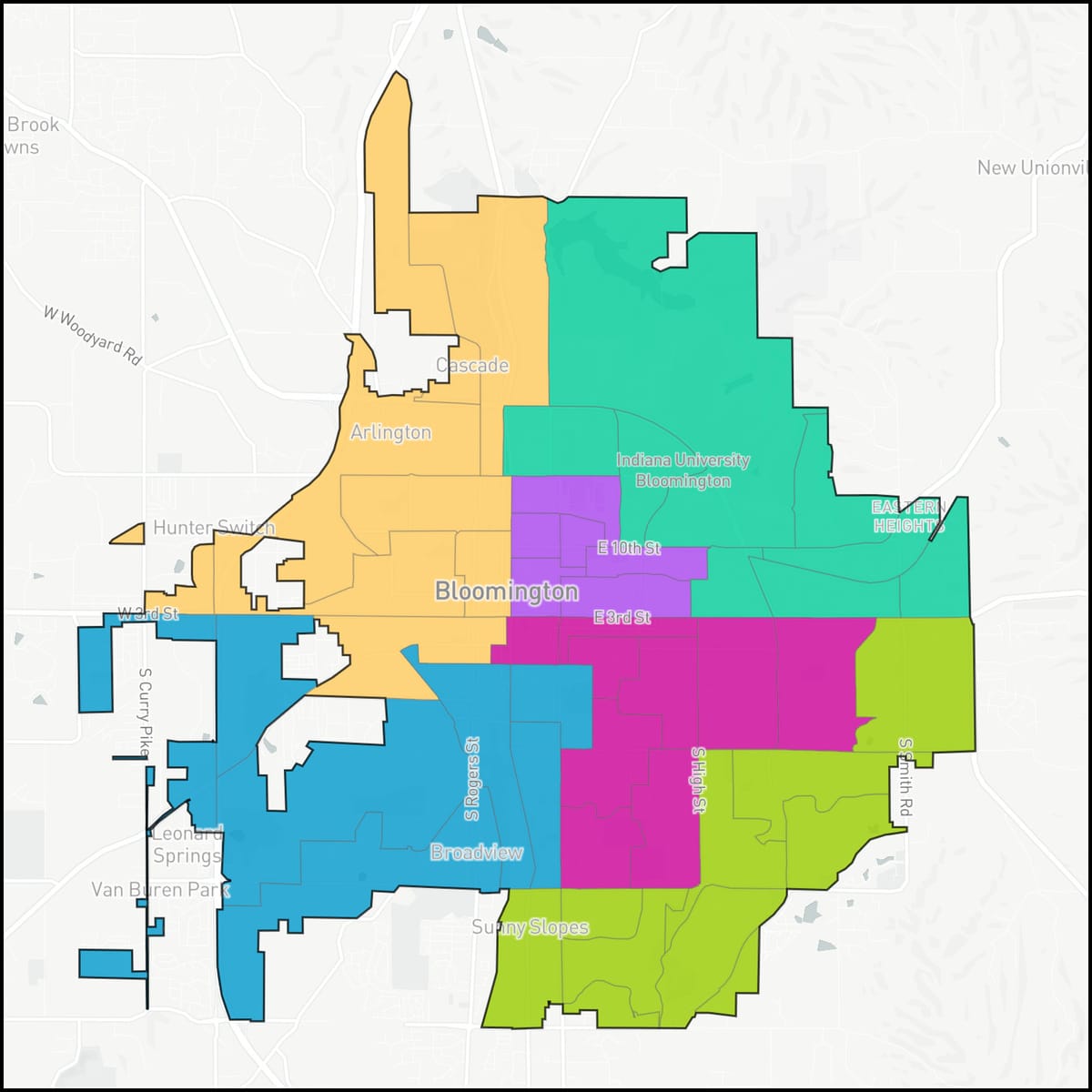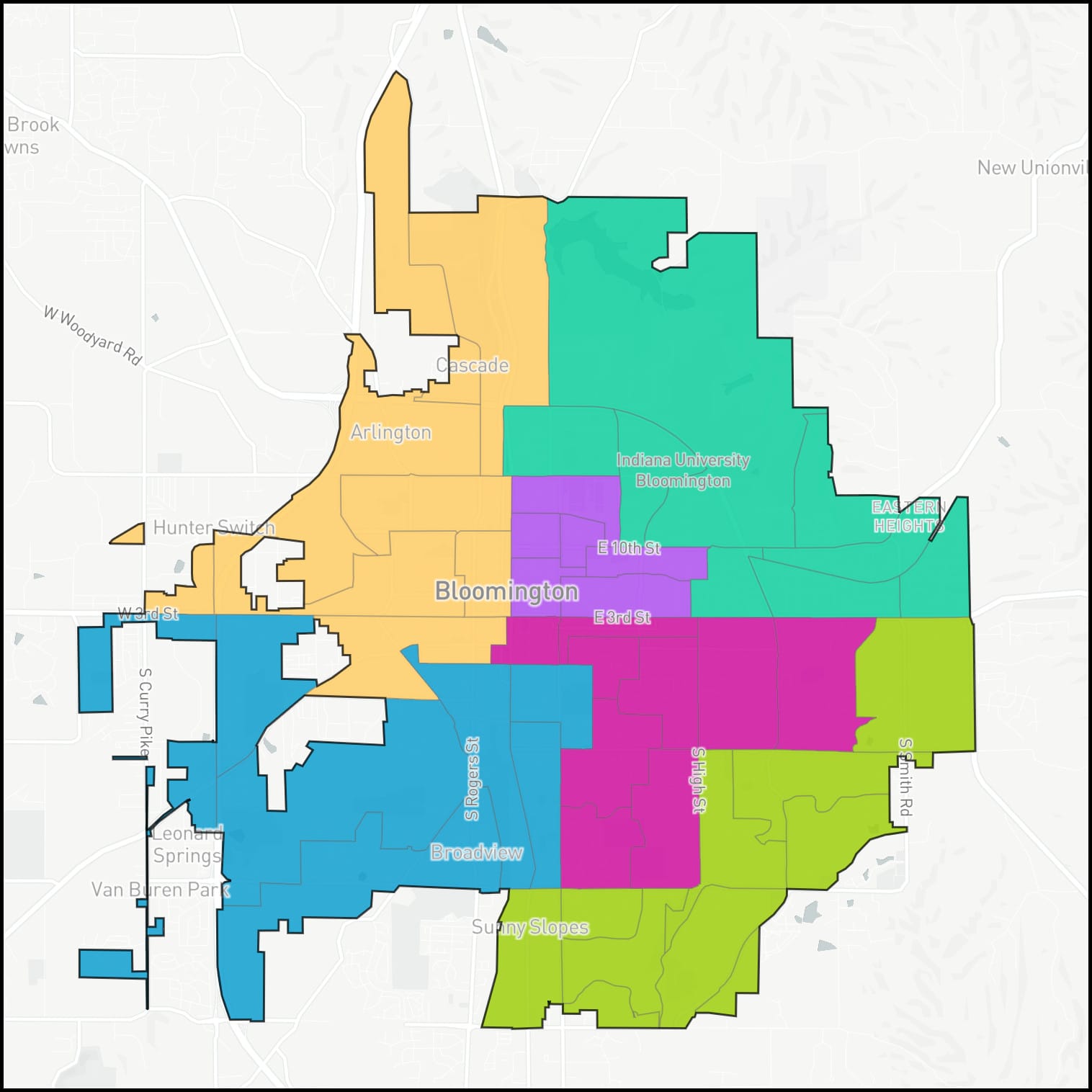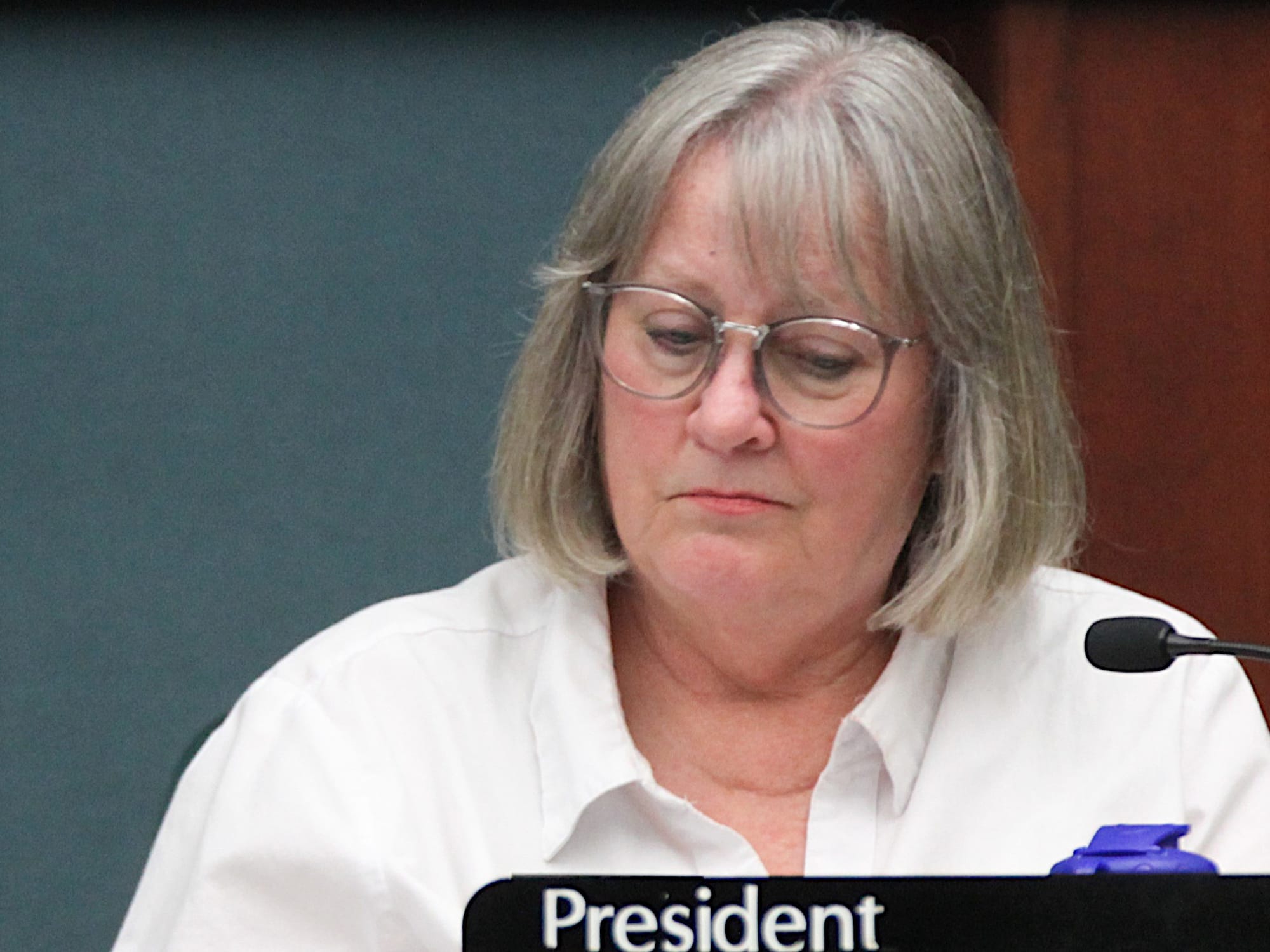Likely no deliberations this week on new map for Bloomington city council districts



Bloomington’s city council almost certainly won’t be deliberating on a potential new district map ordinance at a committee meeting this Wednesday.
The new boundaries that are spelled out in the map ordinance were recommended by the city’s redistricting advisory commission two weeks ago. Consideration of new boundaries for the council’s six districts is required every 10 years in the second year after the decennial census.
But still on the agenda for the council’s 6:30 p.m. Wednesday special meeting is the first reading of the ordinance that would adopt new boundaries for the council’s districts. The first reading will likely still take place, but nothing else.
Under Bloomington’s local code, the city council cannot discuss or amend an ordinance at its first reading.
A practice the council has sometimes used in the past is to call a special meeting for the purpose of introducing the ordinance and giving it a first reading. On that custom, the special meeting is immediately followed by a committee meeting, when discussion can take place. That’s the anticipated discussion that now appears won’t be taking place on Wednesday.
Bloomington local code appears to depart from Robert’s Rules, by treating the committee of the whole on par with other kinds of committees, which can have meetings scheduled outside the context of a regular council meeting.
In any case, the anticipated sequence of events, based on the council’s discussion at last week’s regular meeting, had been for the ordinance to get a first reading at the special meeting this Wednesday. After that, council president Susan Sandberg intended to refer the ordinance to the committee of the whole, which would then convene to deliberate on the map.
At the conclusion of a committee-of-the-whole meeting, Bloomington city councilmembers take a kind of straw poll on the item they discussed, which has no legal impact. Still, that tees up the item for consideration a subsequent council meeting for a second reading, when it can get an official vote on enactment.
But on Monday afternoon, the posted agenda for the committee-of-the-whole meeting was altered to remove consideration of the new district map during the committee meeting. Remaining on the committee-of-the-whole agenda is an ordinance that would vacate a public land parcel.
Responding to an emailed question from The B Square, council president Susan Sandberg indicated that it’s now her intent not to refer the item to the committee of the whole. She intends to allow the future scheduling of the deliberations on the new map to be decided by a vote of the council.
One possible scenario is that the item would appear on the council’s regular meeting agenda on Sept. 21, when the council could vote to adopt the map, reject the map, or postpone consideration of the map question until a later meeting.
City council attorney Stephen Lucas confirmed to The B Square that on Wednesday he’s anticipating no referral of the new map to the committee of the whole. But Lucas still anticipates that the ordinance will still get a first reading at the 6:30 p.m. Wednesday special meeting.
A special meeting for first reading of the proposed new map, followed immediately by a committee-of-the-whole meeting, is a scenario that got strong pushback from some councilmembers last week. Their objection is based at least part on the notion that committee-of-the-whole meetings are not an appropriate context for deliberations by the full council, even if they are in public and are recorded by the Community Access Television Services (CATS).
The idea is that because the elected city clerk’s custom of creating long-form narrative minutes for regular meetings does not extend to committee-of-the-whole meetings, records about deliberations at such committee meetings do not become a part of the council’s official archive of records.
It’s a leftover point from a rift in the council that emerged starting in January 2020, when there was tussle between those who wanted to establish a raft of new standing committees, to which legislation would be referred instead of the committee of the whole.
In 2020, a majority of five supported a full slate of standing committees. In 2021, the standing committees persisted, but items were often referred to the committee of the whole. In 2022, a different majority of five on the council abolished most of the standing committees. This year, on occasion, the council has voted to skip any committee meeting between its regular meetings.
So far, the only public discussion of the new districts by councilmembers came at last Friday’s noon work session.
Sue Sgambelluri asked that when the council does discuss the map ordinance, that council attorney Lucas give a brief overview of the topic of redistricting.
Among the points that Lucas is likely to highlight is the calendar that is prescribed by the 2020 ordinance approved by the council to establish the redistricting commission. The council has to act on the advisory commission’s recommendation, one way or another, by Nov. 1.
If the council decides to reject the recommended map, then the commission has until Dec. 1 to respond to the council’s rejection. The council’s deadline to act, under state law, is the end of the year.
At last Friday’s work session, Sandberg asked if the advisory commission would be present and if the chair of the commission would give a presentation. Lucas indicated that the chair of the commission, Alex Semchuck, would likely be present and available to answer questions.
Sandberg said she had read the background information about the advisory commission’s work, on which the recommended map was based and found it “useful.” About the members of the commission, who were not seated until mid-June, Sandberg said, “I found that to be somewhat reassuring—that they did answer the call.”
At last Friday’s work sessions, councilmember Steve Volan asked that the data considered by the county commissioners in last year’s adoption of precinct boundaries be provided to the city council.
The relevant data for drawing precincts are “active voter” numbers. The basic statutory limits prescribe that precincts must have no fewer than 600 active voters and no more than 2000.
Volan said, “If we could at least get from the county sometime in this process, the data that they use to redraw the precincts, I think it would help us evaluate the map.”
The purpose clause of the 2020 ordinance that established redistricting advisory commission, includes, “…to make recommendations to the Monroe County commissioners on dividing the city into precincts.”
The minor revisions to precinct boundaries that were made by county commissioners were adopted in fall 2021, well before the city council appointed the redistricting advisory commission.




Comments ()